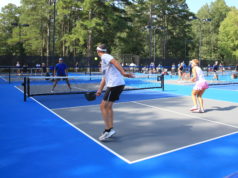BY TERRY GODBOLD, MEN’S LEAGUE VICE PRESIDENT
We typically receive a number of questions each season from captains regarding playoffs, such as: How are the teams seeded? How do you determine the home team? Why are there third-place teams in some levels but not others?
First, the playoff schedule is established prior to the beginning of each season and it depends entirely on how many divisions are in each flight. Therefore, playoff teams are never seeded.
Flights with eight divisions consist of division winners and runners-up with no third-place teams. The same is true for flights with two, four and five divisions.
Flights with only one division will have the first four teams qualifying for playoffs.
Flights with three, six or seven divisions will have some third-place teams in the playoffs. For a seven-division flight, the top two third-place teams with the best records for the overall flight will make the playoffs. For flights with six divisions, four third-place teams will qualify for the playoffs. In flights with three divisions, the top two third-place teams will qualify for playoffs.
For all playoff rounds, division winners will have home court advantage over a second-place team, while a second-place team will have the home advantage over a third-place team. The division winner with the best regular season record has the home advantage over another division winner. The same procedure holds for two second-place teams and two third-place teams.
For flights with three and six divisions, a third-place team will not play teams from their own division in the first round of the playoffs.
Invariably, in determining the playoff draw sheets, the coordinators for each flight must determine how ties will be resolved based on a set of guidelines established prior to the season. A two-way tie will be determined based on head-to-head competition. For multiple ties, a hierarchy of reviews are needed. If head-to-head does not resolve the ties, then we look at the percentage of sets-won to sets-played taken to three decimals. If ties continue, we then look to the percentage of games-won to games-played. If a tie continues, then the computer system will randomly decide positions.




